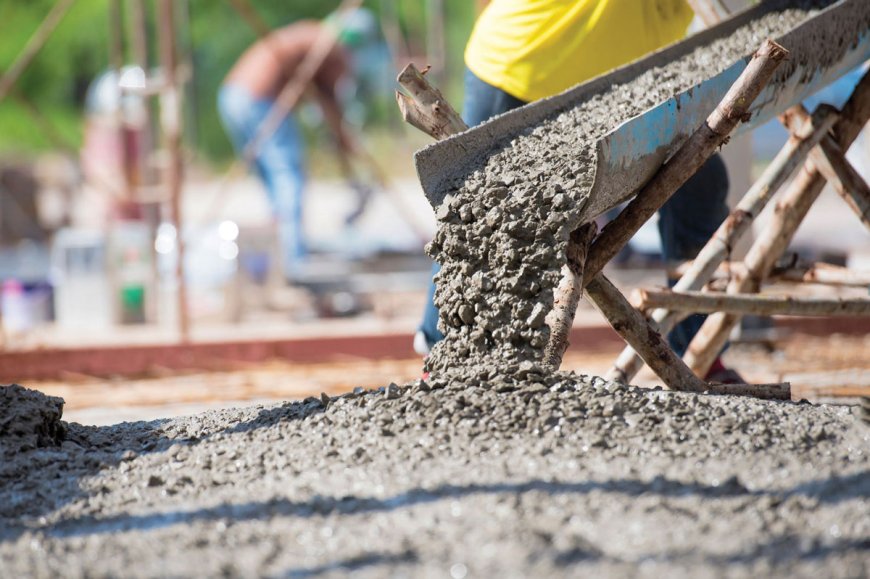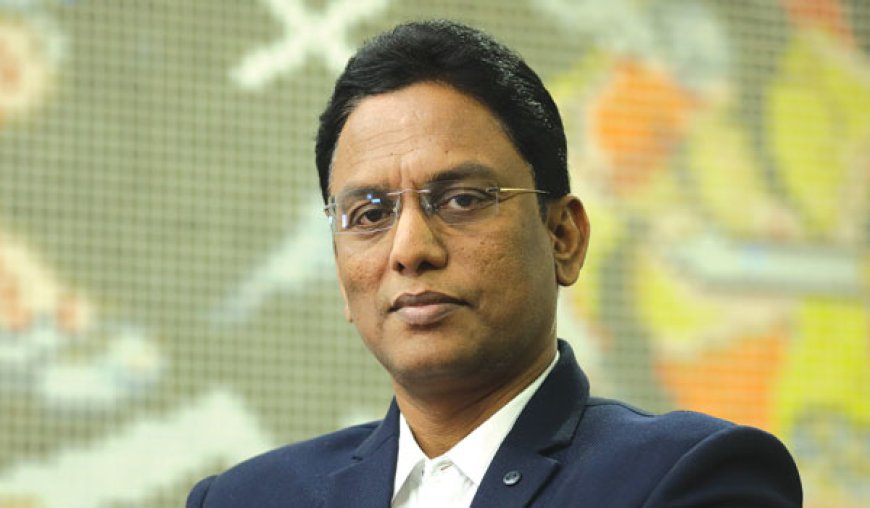Innovations in cement technology

Cement industry has seen many technological advancements over the years through automation and digitalization and the use of advanced materials in cement production. Construction Times explores the scenario.
The Indian construction industry is expected to register a CAGR of more than 10% during 2022-2027, while also contributing approximately 13% to our country’s GDP by 2025. The growing construction industry largely benefits from the rising urbanisation, road and infrastructure development. Being the key construction material, cement plays a crucial role in infrastructure and real estate construction projects. With the construction industry is growing leaps and bounds, it is imperative for the cement industry to be efficient and productive in cement manufacturing.
Enhancing cement output
India’s cement industry is expected to add ~80 million tons capacity by 2025. Fitch Ratings and CareEdge Research indicate a robust growth trajectory, projecting 6-8 per cent increase in cement demand in India in the fiscal 2024. The financial year 2023 witnessed a substantial double-digit growth in demand, signalling a positive momentum. Cement production in India is poised to witness a significant 7-9% expansion, primarily fuelled by strategic investments in overall infrastructure and large-scale residential projects.
India is the world's second-largest cement producer after China. It has 8 per cent of the global installed capacity in cement production. The market size of the India's cement industry was 3,644.5 million tons in 2022. The industry hopes to reach 4,832.6 million tonnes by 2028 at a compound annual growth rate (CAGR) of 4.94 per cent during 2023-2028. The per capita consumption at present of 310 kg is expected to increase 434 kg by 2030.
Transformation in cement industry
The Indian cement sector is undergoing transformative changes, emphasizing product innovation and sustainable practices. A notable focus is on energy efficiency, with advancements in preheater cyclones and calciners aimed at reducing thermal energy consumption. The industry is swiftly transitioning to blended cements to significantly cut CO2 emissions. Ongoing modernization of existing plants further enhances operational efficiency and minimizes the carbon footprint.
Technology adoptions
As the cement industry is aiming a high in production in the coming years, it is imperative for the cement players to adopt new innovative technologies that will enhance production and at the same time, improve efficiency and sustainability in cement industry. Here’s how leading cement players are taking the advantage of advanced technologies to enhance their production efficiency and sustainability approaches.

M. Ravinder Reddy, Director Marketing, Bharathi Cement
VICAT in India has always been pioneer in using automation and digital tools. The company is using SAP HANA, an ERP software for managing business process. SAP HANA offers advanced search, analytics, and data integration capabilities for all types of data – structured and unstructured.
Logistic process at our all-manufacturing plant and cement terminal is fully automated by use of ‘Autoplant’. All the logistics operations are being handled through Autoplant solution from order assignment by Sales in MIS portal till vehicle gate out from factory premises and its en-route tracking.
AI/ML-based software are being used for preventive maintenance at plant. This is helping to improve plant reliability and structure the planned maintenance to minimize the plant outage time.
Implementation of Ivalua, a procurement process management software, is in process. This will help the company to optimize the cost of procurement and inventory management.
The company is using special clay in manufacturing process which improves the performance, durability and workability of the cement.

Ganesh W Jirkuntwar, Sr. Executive Director & National Manufacturing Head, Dalmia Cement (Bharat) Limited
At Dalmia Cement, our dedication to reducing carbon dioxide (CO2) emissions associated with cement production runs deep. We have enacted numerous strategies and integrated diverse technologies to mitigate our environmental impact and champion sustainability. We've implemented a suite of energy-efficient technologies and practices across our manufacturing facilities. These encompass optimizing process parameters, employing waste heat recovery systems, and deploying advanced control systems to curtail energy consumption and, consequently, CO2 emissions. The company is continuously investing in research and development to explore innovative technologies and processes that can enhance the sustainability of our cement production.
While AI adoption in the industry is still in its nascent stages, we anticipate tangible results in the near future, particularly in manufacturing processes within core industries. In order to reap the full benefits of these contemporary technologies we have further plans to completely automate our factory operation starting from production process to operational parameters capturing in ERP. Overall, these technological advancements are bolstering competitiveness, enhancing customer satisfaction, and promoting sustainability in the manufacturing sector.
Cement is made from naturally occurring mineral limestone which is scarce commodity. It’s imperative on us to conserve this precious mineral for generations to come. This calls for technological advancement which enhances cement lifecycle by improving its strength and durability. Below are some technological improvements being made to in the cement & concrete manufacturing to enhance its strength and durability.
Use of SCMs: Dalmia Cement uses specially developed and characterized four main SCMs viz. Silica Fumes, GGBS, Matakaolin and Flyash in its cement. The latest techniques are used for their characterization such as laser diffraction spectroscopy for particle size distribution. Chemical and mineralogical assessment is done by X-ray fluorescence (XRF) and X-ray Diffraction. Further thermal unstable phases assessment is done by TGA technique. After suitable designing of SCMs its properties are again assessed for compatibility and adequacy in the cement-based material where it is being incorporated. These advanced supplementary cementitious materials make cement strong and durable along with reducing carbon footprint. Further efforts are being made to enhance SCMs PSD to 0.1 to 5 micron.
Superfine product of flyash/slag the crystalline phases of quartz/mullite and other mineral become reactive and take part in hydration reaction with clinker mineral phases and part of it work as filler and block all available capillaries which resulted in less water demand and thus helps in increasing the strength.
Use of nanoparticles: Smaller size nano particles occupy the gaps between the fine aggregates and reduce the pore volume making concrete dense. Nano SiO2 and nano Fe2O3 in cement not only act as a filler and improve microstructure but also as an activator to promote pozzolanic reaction. The reaction of Silica with Calcium Hydroxide forms more CSH-gel as more surface area if offered by nano SiO2 bearing particles. Optimisation of this nano size particles not only reduces the capillary porosity but also improve the chloride penetration resistivity thus also helps in improving the durability of concrete structure.
Use of admixtures: High grade concretes require specialized technology, suitable admixtures and stricter quality control at site. It is only used to design leaner structures. The projects where high-grade concrete used are Delhi Metro Rail Corporation (DMRC), Rapid Rail Transit System (RRTS).

Chirag Shah, Head, Marketing & Innovation, Nuvoco Vistas Corp Ltd
Cement is the most essential construction material, acting as a binding agent for concrete and mortar. Often, OPC or ordinary Portland cement is heard of. However, with the use of supplementary cementing materials like slag and fly ash, cement has become more durable with equivalent mechanical performance. Incorporating supplementary cementitious materials has enhanced concrete's performance in terms of resistance to chemical attacks, shrinkage, and cracking. The right proportioning and blend of supplementary cementing materials play a significant role in imparting durability to cement without compromising its mechanical performance. Composite cements, a blend of slag and fly ash, are equally durable with clinker replacement.
Ferrocement is one such cement-based long-lasting composite emerging recently, or a modified form of reinforced microconcrete in which the reinforcement is finely subdivided and dispersed uniformly in the matrix (throughout thickness and area) to achieve a closely spaced crack regime coupled with excellent corrosion resistance and high impermeability to water ingress. Stearates/fatty acids in cement can impart hydrophobic properties, preventing water entry at the concrete surface, thereby increasing its durability.
Polymers, iron slag, and nanomaterials are advancing materials to be combined with cement to enhance its durability and reduce the porosity of the final hardened form. Recently, the use of nanomaterials to improve mechanical properties and durability performances has received considerable attention. It is believed that the improvement effects by admixing nanomaterials mainly occur by acting as dense filler and being involved in cement hydration. The photocatalytic effect of nanotitanium is also commonly reported in the literature, endowing the surface of binders with self-cleaning ability in the presence of ultraviolet light. However, the type, dosage, and dispersion are challenges in using these materials.

Neeraj Akhoury, Managing Director, Shree Cement Ltd
We have been at the forefront of innovation in cement manufacturing. We pioneered the use of Pet coke as fuel in our plants, the manufacture of synthetic gypsum and the installation of Waste Heat Recovery in all our plants.
To uphold our commitment to delivering the best quality products, we're using polypropylene fibre and adding chemical and mineral-based admixtures. This enhances the strength, durability and crack resistance of our products, ensuring we meet our customers' expectations.







